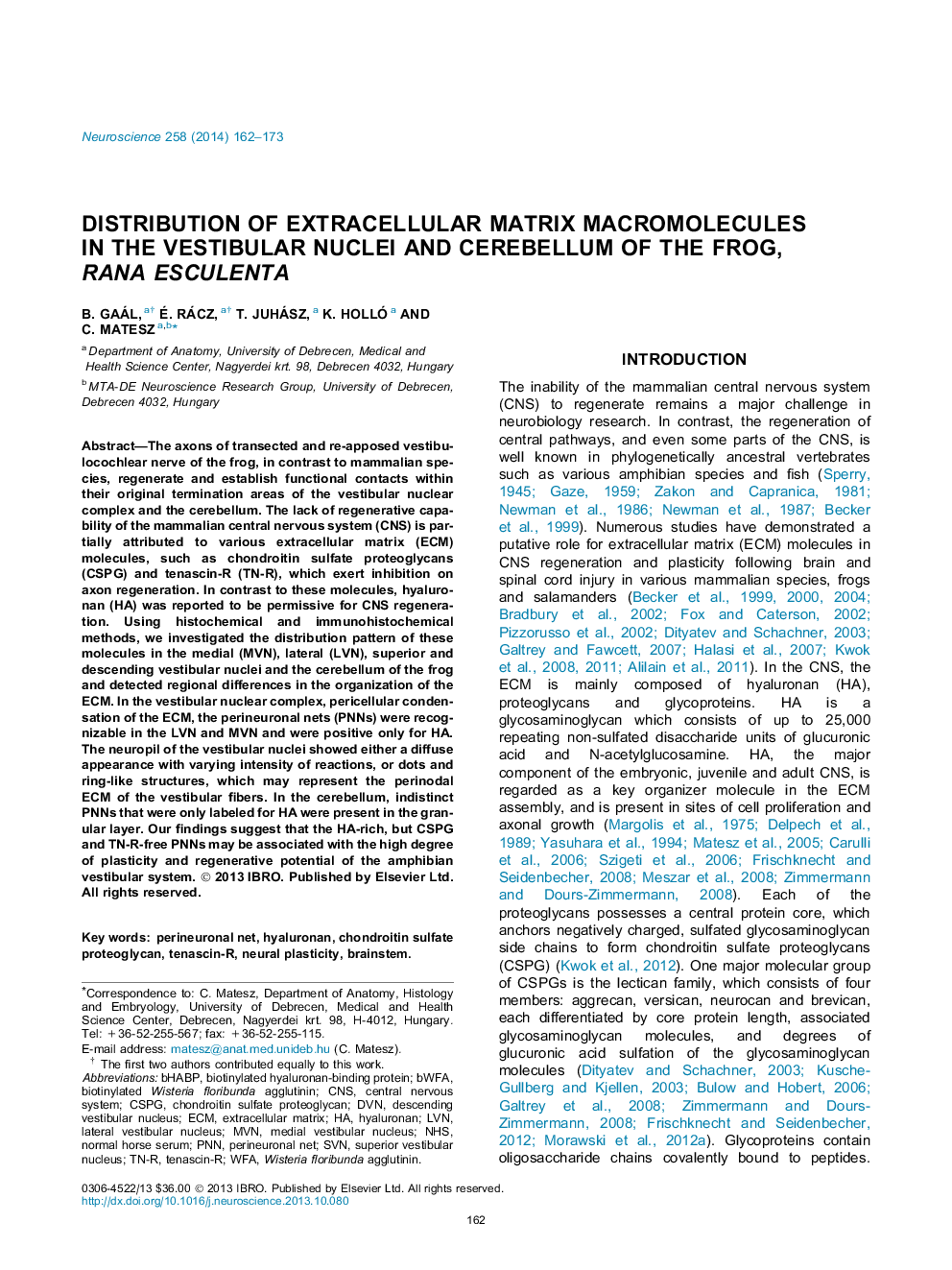| کد مقاله | کد نشریه | سال انتشار | مقاله انگلیسی | نسخه تمام متن |
|---|---|---|---|---|
| 4337762 | 1614818 | 2014 | 12 صفحه PDF | دانلود رایگان |
• Extracellular matrix shows area-dependent distribution in frog vestibular nuclei and cerebellum.
• We observed only hyaluronan in the perineuronal net (PNN).
• In the cerebellum the PNNs were present only in the granular layer.
• The neuropil showed either a diffuse appearance or ring-like structures.
The axons of transected and re-apposed vestibulocochlear nerve of the frog, in contrast to mammalian species, regenerate and establish functional contacts within their original termination areas of the vestibular nuclear complex and the cerebellum. The lack of regenerative capability of the mammalian central nervous system (CNS) is partially attributed to various extracellular matrix (ECM) molecules, such as chondroitin sulfate proteoglycans (CSPG) and tenascin-R (TN-R), which exert inhibition on axon regeneration. In contrast to these molecules, hyaluronan (HA) was reported to be permissive for CNS regeneration. Using histochemical and immunohistochemical methods, we investigated the distribution pattern of these molecules in the medial (MVN), lateral (LVN), superior and descending vestibular nuclei and the cerebellum of the frog and detected regional differences in the organization of the ECM. In the vestibular nuclear complex, pericellular condensation of the ECM, the perineuronal nets (PNNs) were recognizable in the LVN and MVN and were positive only for HA. The neuropil of the vestibular nuclei showed either a diffuse appearance with varying intensity of reactions, or dots and ring-like structures, which may represent the perinodal ECM of the vestibular fibers. In the cerebellum, indistinct PNNs that were only labeled for HA were present in the granular layer. Our findings suggest that the HA-rich, but CSPG and TN-R-free PNNs may be associated with the high degree of plasticity and regenerative potential of the amphibian vestibular system.
Journal: Neuroscience - Volume 258, 31 January 2014, Pages 162–173
